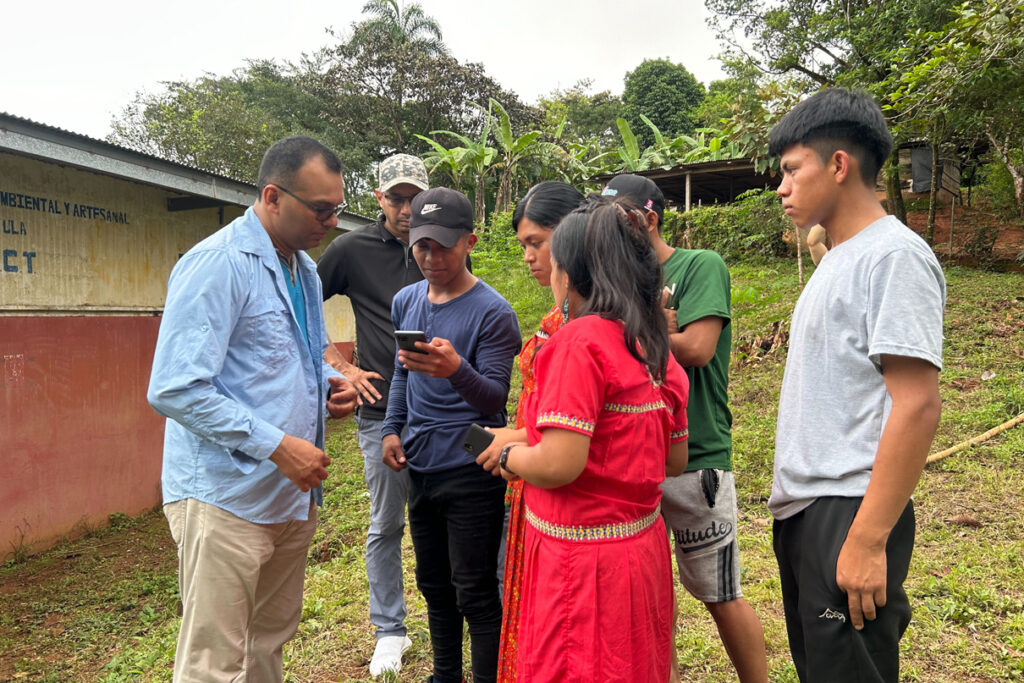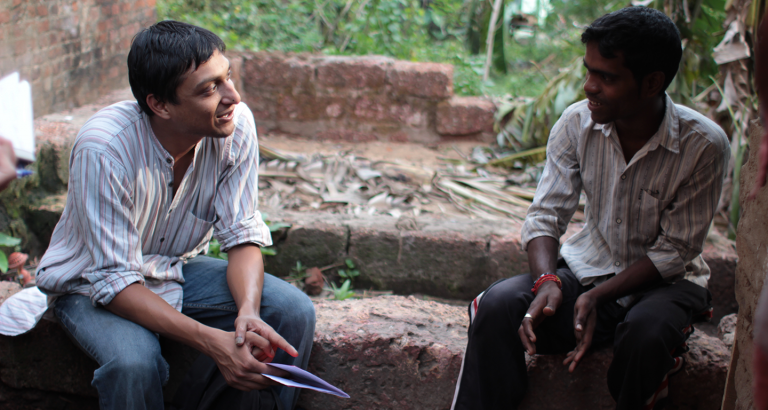
Arquimedes Pérez trained Milka and Juan in the installation and configuration of satellite antennas, connection of computers and tablets to Wi-Fi and ways to take care of solar panels and other technology provided by the project. ©FAO/Catalina Acosta
In the remote western highlands of Panama, where the Ngäbe Buglé Indigenous People live far from urban centers, two young community members are helping bring digital tools to local farmers and families.
Milka Rodríguez, 23, and Juan Cedeño, 20, are students at the Autonomous University of Indigenous Peoples, where they are pursuing degrees in Bilingual Intercultural Education. They also work in agriculture alongside their families. Recently, they took on an additional role: leading a digital literacy effort in their communities as part of a regional project focused on digital transformation in agriculture.
The training was offered under a collaboration between the Food and Agriculture Organization of the United Nations (FAO) and the People’s Republic of China, through the South-South Cooperation programme. The effort spans 12 countries in Latin America and the Caribbean and aims to strengthen rural economies by improving digital access and skills. In Panama, four producer associations in the Ngäbe Buglé region took part in the project.
Two experts from China’s Ministry of Agriculture and Rural Affairs worked with local organizations to support the effort, providing technical training and guidance to FAO and Panamanian government staff, as well as members of the Ngäbe Buglé communities.
Milka and Juan were invited to join the training by their parents, who lead two of the participating producer associations.
“I became interested in this association thanks to my mother, as she was already involved before … From a very young age, I have liked to participate in something that positively impacts the community,” Juan says.
For five weeks, they attended sessions hosted by the Nuestra Señora del Camino Foundation in partnership with Panama’s Institute of Agricultural Innovation (IDIAP). The sessions covered basic computer and internet use, tablets, and software for professional work and communications. Both Milka and Juan quickly became leaders in the class, helping others navigate the unfamiliar technology.
Their leadership caught the attention of Arquimedes Pérez, an Information Technology Officer at FAO’s Panama subregional office, who asked them to assist in installing new equipment and solar-powered infrastructure in their communities.
“Youth is the renewal of communities,” Pérez said. “The objective of involving young people from each community is so that they can provide front-line support to their associations.”
They helped configure laptops and tablets, troubleshoot connectivity problems, and train others on how to use the devices. They also learned to maintain solar panels that now power the equipment at the four participating associations.
The benefits have been practical. Milka and Juan now use social media to promote and sell products from their communities. Milka has sold handmade goods, grains, and legumes both locally and outside the region. They also access weather forecasts and agricultural information online, which helps guide planting and harvest decisions.
Importantly, they are passing on what they’ve learned.
Milka and Juan are training other young people in their communities to use the new tools and solve basic technical issues. Their work is helping to improve digital access and create new opportunities in an area where poor roads and limited connectivity have long posed challenges.
This article is based on a press release from FAO. The original story and images are available here: Digitalizing Panama’s Mountain Villages.

